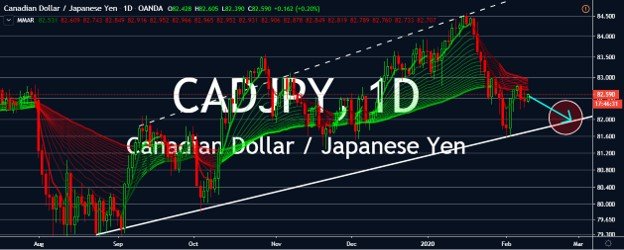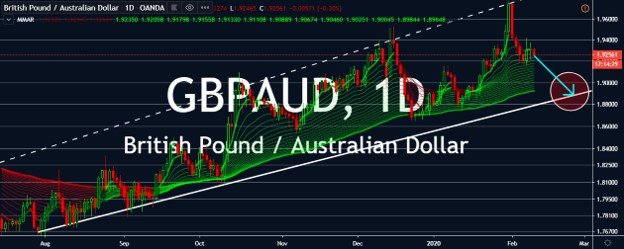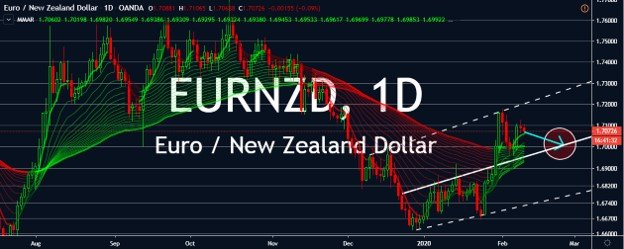Good day traders! Check now the most recent charts and market updates for today’s session. Learn more about analysis and be updated on the current happenings in the market!
CADJPY
Strong results from the Canadian housing starts and building permits that were released yesterday caused the Canadian dollar to steady against the Japanese yen. However, the pair is still widely expected to fall to its support by the latter part of the month. Bears are keeping their eyes on the price and are working hard to prevent the Canadian dollar from getting away with a strong rally. Canada’s housing starts report for January showed an impressive surge from 195.9K to 213.2K, exceeding the forecasted 205.0K. Meanwhile, the country’s monthly building permits figures from December showed a commendable rebound from -3.5% to 7.4% a big leap from the expected 1.5%. But as mentioned, the Japanese yen is still expected to outrun the Canadian dollar as the mood about the novel coronavirus continuous to weigh on investors. In mainland China alone, the virus has killed more than a thousand people and the number of cases continues to spread.

GBPAUD
The British pound is struggling to rally in sessions ahead of the United Kingdom’s gross domestic product results. Investors are worried about the health of the British economy amidst the Brexit transition and snap election period. Unfortunately for the sterling, Britain’s GDP results for the fourth quarter of 2019 are expected to show contraction. The report is set to be released later today, and if the UK economy actually records contraction, the British pound could continue to tumble to its support levels. It is believed that if bears held on with a tight grip to the downward momentum, the pair would actually reach its support by late February. Meanwhile, the improving sentiment in Australia and the recent release of the home loans results is helping the Australian dollar overpower the British pound. Yesterday, Australia’s monthly home loans figures showed growth from 1.8% to 3.5%, surprising experts who projected it to contract to 0.7%.

EURNZD
The single currency is headed for a downward run against the New Zealand dollar as weak figures the eurozone’s economies weigh on the euro. The pair is projected to reach its support levels before the month ends as bears gradually pull the pair lower. Unfortunately for bulls, it will be a massive struggle trying to lift the pair after a strong surge in the latter half of January. Aside from the dull figures from the bloc, the political uncertainty in Germany is making it more difficult for the euro to rally. Reports also say that the morale of investors from the eurozone is falling for the first time in months due this February due to the concerns of the novel coronavirus. The report found that traders are concerned about whether china could contain the spread of the virus, and on top of that, the rising death toll weighs in. However, the drop isn’t expected to be steep as the New Zealand dollar is also weakening ahead of the Reserve Bank of New Zealand’s official statement.

EURJPY
The eurozone’s euro is expected to drop against the Japanese yen as the coronavirus continues to hit the market. The safe-haven appeal of the Japanese yen is rising thanks to the deadly virus from China. Meanwhile, the single currency is struggling to rally as investors’ morale go down due to the virus. It was reported that for the first time in four months, investors from the bloc are feeling less confident as they fear that Beijing will not be able to control and prevent the spread of the fatal disease. Aside from that, weak results from the eurozone’s economies are weighing on the pair, making it hard for it to fully recover in sessions. Berlin’s industrial output fell its steepest fall since the recession back in 2009 in its latest reading for the month of December. Italy’s industrial output also came in weaker than expected. To make it even worse, the political uncertainties in Germany are adding additional pressure to the single currency.









